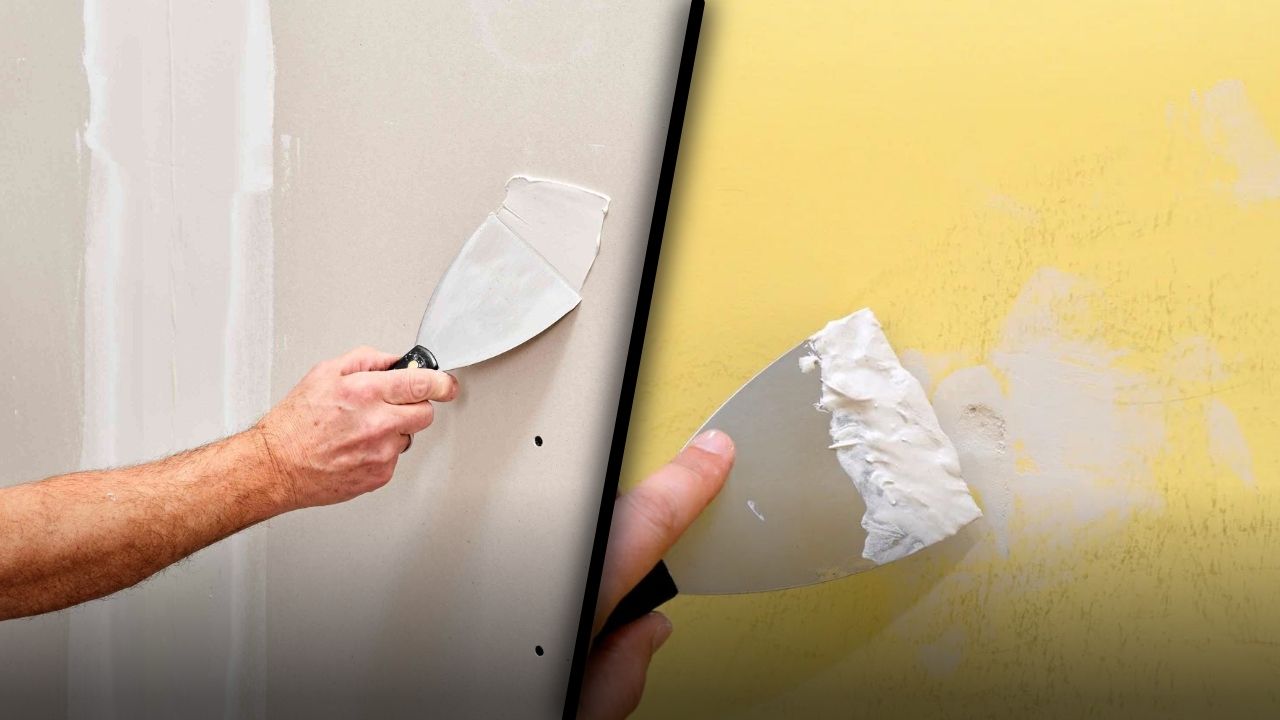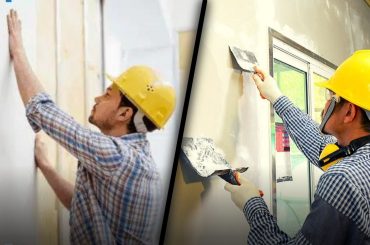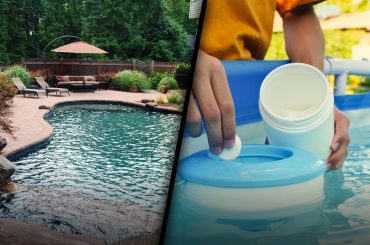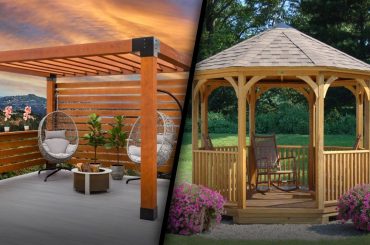In the installation of drywall, joint compound and spackle perform similar functions. They are not interchangeable, despite what some people believe. Spackle isn’t suitable for replacing joint compound, but joint compound can be used in place of spackle. Discover how each is tailored to serve a different purpose.
Joint Compound |
Spackle |
|
Contains limestone and gypsum |
Binding agents and gypsum are included |
|
Suitable for large-scale wall projects |
Small wall repairs can be done with this product |
|
Larger quantities available |
A smaller quantity is sold |
|
Consistency is thinner |
The consistency is thicker |
| Dry shrinkage is high |
When dry, there is minimal shrinkage |
| It is harder to smooth out |
User-friendly |
What Is Joint Compound?
In addition to joint compound, drywall mud is also known as mud. Gypsum and limestone are the main ingredients, but clay, mica, perlite, and starch are also included. Since joint compound spreads like mud, its common name is derived from its spreadable consistency. Joint compounds vary in consistency, however.
A large wall repair project or a new drywall installation usually requires this type of equipment. In addition to repairing small holes, smoothing out dents, and making small and medium repairs to plaster walls, joint compound can also be used to repair small or medium holes or dents. Plaster walls with large holes will likely need to be replastered. The workability of plaster is generally greater than that of spackle or joint compound due to its rapid set time.
Uses and Cost
A joint compound is primarily used for seaming and smoothing new drywall installations. It is available in premixed containers of one quart to five gallons or powdered form that you can mix yourself with water. The product is sold in large containers and is designed to cover a large area, but can be used for filling holes and other smaller projects as well. In addition, it takes up to 24 hours for joint compound to dry before sanding or painting. A joint compound can be classified into four types:
-
All-purpose: Suitable for all patching phases
-
Topping: The final coat and is usually applied after two coats of taping compound have dried
-
Taping: Puts drywall tape over drywall seams and seals them
-
Quick-setting: It dries faster than other compounds and fills deep cracks and wide holes effectively
There is a relatively low cost associated with joint compound. The cost of a large container of the substance is not justified for minor repair projects, despite the fact it doesn’t cost a lot up front. Joint compound’s consistency can also make it difficult to apply a smooth finish, and achieving a seamless finish takes some practice and patience.
What Is Spackle?
Gypsum powder and binders are used to make drywall spackle. Similar to toothpaste, it has a thicker consistency than joint compound (drywall mud). Premixed tubs of spackle are sold. There are several different grades available to meet the needs of different applications.
The use of spackle on walls includes filling in dents and dings, nail holes, and any other small damage. Drying time is typically less than half an hour, compared to joint compound. It is possible to use spackling compounds on a variety of surfaces or outdoors depending on the type.
-
Lightweight spackling compound: It contains fine aggregate and sodium silicate with an adhesive; it is designed for repairs of small holes, dings, and cracks; it doesn’t sand well; it is designed for small, quick repairs only
-
Standard/all-purpose spackling compound: Gypsum-based (related to joint compound); repairs drywall holes, gouges, and cracks.
-
Vinyl spackling compound: a strong, lightweight compound that fills in holes and cracks up to 3/4 inch deep. It can be applied in layers and won’t dry out or crumble. It sands well, but it is not waterproof.
-
Acrylic spackling compound: Versatile; can be used outdoors; can be applied to drywall, stone, brick, wood, or plaster
-
Epoxy spackling compound: repair holes, gouges, cracks, and other imperfections in wood with an oil-based filler; can be used outside
Uses and Cost
A small repair job can be done with spackle. There is more thickness and difficulty spreading it compared to joint compound. When dried, it is less likely to crack or shrink because it contains both gypsum powder and a binding agent. There is a slight difference in price between spackle and joint compound. This is not a direct comparison, however.
You spend more on joint compound for your drywall project since it is used in larger quantities to cover a larger surface area. In spite of its small size, spackle goes a long way because you only use a few ounces of it at a time, and it lasts for months or even years.
Which Should You Choose?
What is the best joint compound or spackle to use? It may only be necessary to use spackle by most homeowners. It is important to choose the right joint compound and spackle for the job at hand in your home.
If small cracks or nail holes need to be filled with joint compound or spackle, spackle is the best choice. The drywall compound and drywall tape will also be needed if there are large holes or cracks in the wall.





